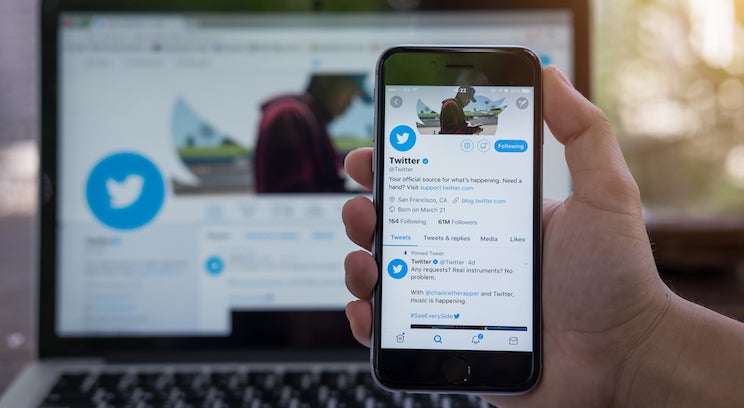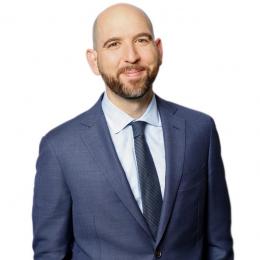
For more than 10 years, online publishers have relied on the US Ninth Circuit's 2007 Perfect 10 decision, which held that a party that embeds a third party's content is immune from liability under the United States Copyright Act, provided that such content is hosted on a third-party server. As a result, the practice of embedding Tweets has become routine — even necessary — in the public discourse, and virtually every blog post links to a YouTube clip or Instagram post.
Goldman v. Breitbart, however, recently decided by Judge Forest of the Southern District of New York, has the potential to upend what had seemed to be a settled, bright-line rule, injecting uncertainty and heightened risk of copyright liability into the media sphere.
The facts of Goldman turn appropriately on a chance encounter and a surreptitious photo destined to go viral. In the summer of 2016, Justin Goldman spotted Danny Ainge and other top executives of the National Basketball Association's Boston Celtics in East Hampton, New York with Tom Brady, quarterback of the New England Patriots, a US football team. Goldman snapped a photo of the party and posted it to his Snapchat story. From there, other users posted Goldman’s photo to Twitter, where it was discovered by NBA fans, who concluded en masse that Brady had joined the Celtics’ effort to recruit superstar free agent Kevin Durant to Boston. Several media organizations then published stories about the Durant speculation embedding the viral Tweets, and by extension Goldman's photo.
Embedding allows internet publishers to use HTML code that instructs readers’ browsers to display a particular Tweet (and their associated media) by retrieving them from Twitter’s servers directly. Users can, therefore, view the embedded content without navigating to the third-party website directly.
Twitter’s terms of use provide that, in uploading content to the service, users grant Twitter itself and other Twitter users a non-exclusive, worldwide, royalty-free license to “make your content available to the rest of the world and to let others do the same” (emphasis added). But Goldman did not upload the photo to Twitter himself, and he never agreed to the license in Twitter’s terms of use. Accordingly, Goldman, as the owner of the copyright in the photo, never authorized the display of the image.
Goldman sued Breitbart, Time Inc., Yahoo, and a host of other media organizations for copyright infringement for violating his exclusive right of display under the Copyright Act. The defendants moved for summary judgment, relying on Perfect 10 and its seminal “Server Test.”
In Perfect 10, the Ninth Circuit held that Google was not directly liable for copyright infringement for displaying small thumbnail images of plaintiff’s images on its own servers, which linked to the larger, full resolution versions hosted on Perfect 10’s servers. Users could access the full resolution versions only by taking the independent, deliberate action of clicking the thumbnail to directly access plaintiff’s content displayed on a different site and hosted on different servers.
According to the Goldman defendants, the Server Test announced a simple calculus: linking to or embedding content is not susceptible to liability for direct infringement if the material is hosted on a third party’s server. Applying Perfect 10, the defendants argued that they had not actually “displayed” Goldman’s photo; instead (as summarized by the District Court) they “simply provided ‘instructions’ to users’ browsers to navigate to a third-party server on which the photo resided.”
Goldman responded that the Server Test subverted the policy aims of the Copyright Act by undermining publishers’ incentive to pay licensing fees to content creators, and further claimed that even if the Server Test was appropriate in the case of Perfect 10 — where users had to take the intentional step of clicking on the Google-hosted thumbnails to access plaintiff’s full-size images — it was inapplicable here, as defendants’ articles wholly incorporated the Tweets (and photograph) at issue.
While the Seventh Circuit has adopted Perfect 10, the Second Circuit has not considered the Server Test. Not bound by controlling precedent, Judge Forest declined to apply the Server Test and granted partial summary judgment to Goldman. Emphatically rejecting the Server Test and its reliance on technical distinctions, the District Court noted that:
[D]efendants’ websites actively took steps to ‘display’ the image.... Each and every defendant itself took active steps to put a process in place that resulted in a transmission of the photos so that they could be visibly shown. Most directly this was accomplished by the act of including the code in the overall design of their webpage; that is, embedding. Properly understood, the steps necessary to embed a Tweet are accomplished by the defendant website; these steps constitute a process. The plain language of the Copyright Act calls for no more.
The ruling further underscores the point by twice quoting a passage from the United States Supreme Court’s 2014 decision in American Broadcasting Cos., Inc. v. Aereo, Inc. admonishing against determining copyright liability on the basis of technical subtleties:
The language the Court used [in Aereo] to describe invisible technological details applies equally well here: ‘This [technological] difference [relied upon by defendant] means nothing to the subscriber. It means nothing to the broadcaster. We do not see how this single difference, invisible to subscriber and broadcaster alike’ could [prevent liability].
The District Court also distinguished the facts of Perfect 10 from Goldman, as users in the former case “navigated from webpage to webpage, with Google’s assistance. This is manifestly not the same as opening up a favorite blog or website to find a full color image awaiting the user, whether he or she asked for it, looked for it, clicked on it, or not.”
Finally, the District Court was unmoved by the warnings of defendants and their amici “that not adopting the Server Test here would ‘radically change linking practices, and thereby transform the Internet as we know it.’” The District Court pointed out the existence of potentially viable defenses, including the existence of a controlling license, fair use, and limitations on damages for innocent infringement.
Goldman was received with substantial concern by media organizations and content providers. Scarcely one month after issuing her ruling, Judge Forest granted the defendants’ motion to certify the ruling for interlocutory appeal to the Second Circuit. The certification order states that the District Court “credits the parties’ representations that its [order] finding defendants liable for violating the ... Copyright Act, has created tremendous uncertainty for online publishers. [G]iven the frequency with which embedded images are ‘retweeted,’ the resolution of this legal question has an impact beyond this case.”
Defendants’ appeal is proceeding before the Second Circuit. If the Second Circuit affirms Goldman and rejects the Server Test, it would create a significant circuit split, with the Ninth and Seventh Circuits adopting the rule and the Second Circuit rejecting it. The intervention of the Supreme Court may follow.
Pending the outcome of the Goldman appeal, however, providers of online content should consider applying extra scrutiny in embedding Tweets and other third-party content, in order to mitigate the risk of a potentially costly and uncertain claim of infringement.





